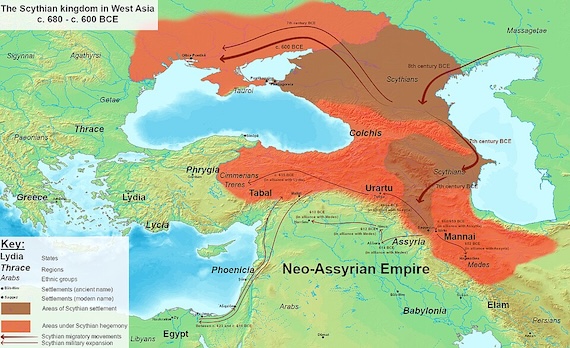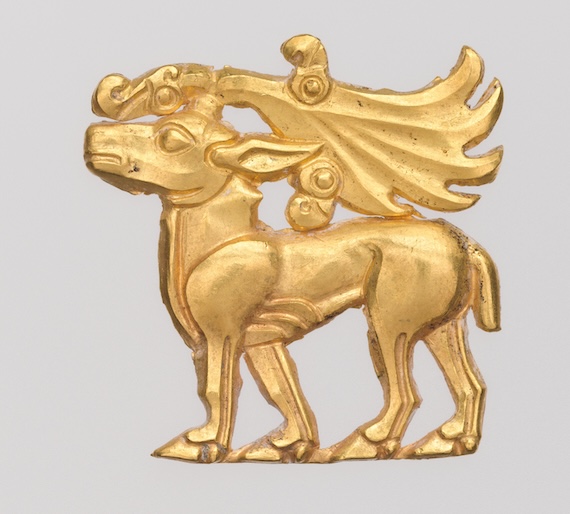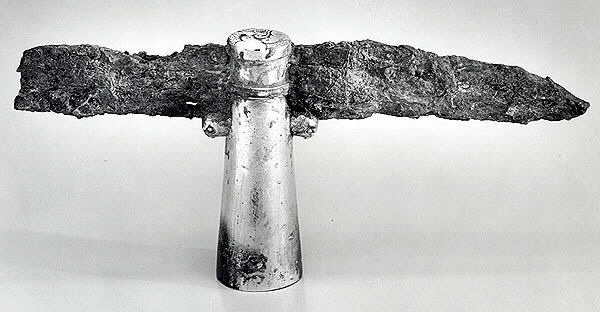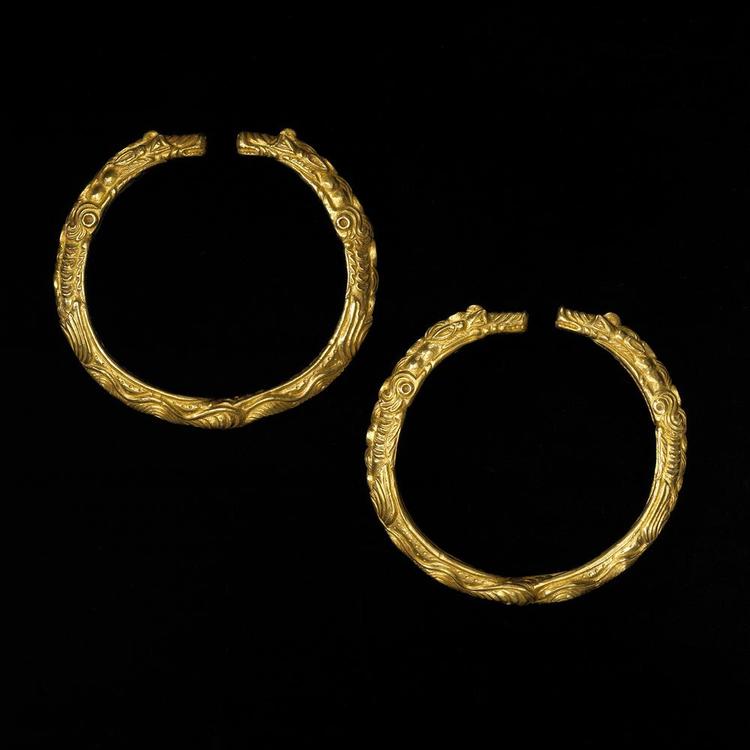Ann Arbor (Informed Comment) – The more genetic history that is done, the more it is clear that ancient ethnonyms, the names given supposed ethnicities, put a variety of peoples under a single rubric. I talked recently about how the Phoenicians, long thought to be what we would now call Lebanese, were actually a multi-ethnic trading diaspora in which Greeks and Italians took a leading role in North Africa and Spain — even if they worshiped the god Baal and adopted a Semitic lingua franca.
Now Tatiana V. Andreeva and her colleagues have published a major study of the dna of 131 ancient Scythians, who lived in the Eurasian steppes beyond the Black Sea and at times ruled a vast empire that encompassed Crimea and southern Russia, stretching east. It turns out that they weren’t one people.

Map by Antiquistik via Wikimedia Commons under Creative Commons Attribution-Share Alike 4.0 International license.
This point is worth underlining at a time when the United States is seized with a paroxysm of white nationalism. “Whiteness” is meaningless as an ethnicity. Some 5% of self-professed whites in the South have recent African heritage. Courts recognized Arab-Americans as white in the early twentieth century when the category was essential for basic legal and property rights. Apartheid South Africa recognized the Japanese as “white” when they became for a while the world’s second largest economy. Most “national” “ethnicities” can be deconstructed. So it is important to recognize that “nations” are constructs. Certainly, the diverse Scythians were.
Herodotus is one of our major classical sources on the Scythians, whose heyday stretched from the 700s to the 100s BCE, being thus roughly contemporaneous with the ancient Persians of Iran, whose Achaemenid Empire was overthrown by Alexander in 330 BCE. And, indeed, the Scythians are said to have tangled with Darius (d. 486 BCE), the Achaemenid king, as Herodotus said:
- “After the taking of Babylon, an expedition was led by Darius into Scythia. Asia abounding in men, and vast sums flowing into the treasury, the desire seized him to exact vengeance from the Scyths, who had once in days gone by invaded Media, defeated those who met them in the field, and so begun the quarrel. During the space of eight-and-twenty years, as I have before mentioned, the Scyths continued lords of the whole of Upper Asia.”

Dress ornament, Scythian, ca. 5th century BCE, Metropolitan Museum, NYC
The Scythians are also thought to have spoken an Iranian language. Persian is only one of the many Iranian languages — others include Avestan, Soghdian, Saka, Kurdish and Pushtun. The Scythians had a shifting nomadic empire that sometimes stretched nearly to Siberia. Luckily for historians and archeologists, the Scythians had elaborate burial rites for their chieftains, often burying weapons and precious metals with them. Professor Andreeva notes that “Scythian burials can be recognized by certain archaeological indicators. These include “animal style” artistic tradition in various artifacts, specific types of weapons, including the composite bows and acinaces daggers, and distinctive horse harnesses (e.g., bridles, bits, and saddles).”
This material-culture “triad” that allows the identification of Scythian burial sites means that if geneticists can extract DNA from the remains of such a mound, they know they are dealing with Scythians.
By the way, the weapons that are mentioned are distinctive. Akinakes were double-edged short swords for thrusting. Mike Loades explains that composite bows are double-curved, made of wood, horn, sinew and glue, and then laminated. Despite being relatively short, they could have a draw weight of over 100 pounds. Powerful, they could be fired from horseback even before the invention of the stirrup, using saddle pommels for balance. This steppe technology made the nomadic Scythians a formidable natural cavalry.
The fighters included women archers, whom the Greeks called Amazons. Some of them cut off their right breast so it wouldn’t interfere with letting the arrows fly in combat. Armed females were interred in burial mounds with their weapons.

Axe head, Scythian, ca. 6th–5th century BCE, Metropolitan Museum, NYC.
So, were the Scythians, as some archeologists argued, a reformulation of the Srubnaya people of the Eurasian steppes, or were they Central Asians, as others have argued?
The answer is: all of the above. Some 30% of the samples showed ancestry from the Srubnaya Iranian-speakers and Anatolian farmer populations. Some 10% had some East Asian ancestry. Others were “positioned close to present-day European individuals between the modern Caucasus, North European, and Western Pontic populations.” Some had dark hair and eyes. Many in the west had fair hair, even red hair, and blue eyes, as Herodotus reported. Some had Baltic antecedents, others were mainly from the steppe.
After the decline of the Scythian nomadic empire in the 200s BCE, the succeeding people in eastern Anatolia (now eastern Turkey) were known as Sarmatians, Iranian speakers. But they don’t seem to be related to the Scythians.

Oxus Treasure. “Gold penannular armlet: the monsters have long snouts, rows of teeth, triangular hsaped eyes and long tails which interlock at the back of the hoop. The cast is solid and the decoration is chased. These bracelets can be associated either with art from the Caucasus or with the Scythian-style art of western Siberia. Scythian?. 5thC BC-4thC BC. © The Trustees of the British Museum. Shared under a Creative Commons Attribution-NonCommercial-ShareAlike 4.0 International (CC BY-NC-SA 4.0) license.
Most Scythian men seem to have married out, so there is lots of diversity in the mitochondrial dna from the women. There was one one elite clan in the middle Don region that only married other members of the clan. Maybe it was a royal clan of the sort of which Herodotus speaks. But it was unusual. No other Scythian tribe married within the group.
After the 200s BCE, the Scythians seem to have gradually migrated en masse to Europe, leaving DNA traces in Poland, Denmark, Scandinavia, and the northwestern part of Russia, and even in Britain. The people now living where they used to roam don’t seem to retain the haplotypes or genetic markers characteristic of the major Scythian groups represented in the Eurasian burial mounds. As noted, the Sarmatians, who are almost certainly ancestral to the Kurds, don’t seem related to the Scythians.
One new finding is that the Scythians couldn’t eat fruit– many of them had fructose intolerance. As pastoralists, they likely lived on meat and dairy and bartered for grain. They don’t seem to have been lactose intolerant, as many east Asians are, and they may have drunk fermented mares’ milk the way we know the later Mongols did. They didn’t have a problem with alcohol addiction. On the other hand they appear to have gotten high on hemp, akin to marijuana.
Andreeva et al. conclude, “We have demonstrated the genetic heterogeneity of temporally and geographically distinct Scythian communities and that their ancestry primarily originates from different steppe-related BA [Bronze Age] groups, with minimal contributions from ancient Siberian and/or Asian components. These findings confirm the hypothesis that IA [Iron Age] populations across vast steppe areas share cultural elements but not ethnicity.”
That is, the Bronze Age Scythians may not have been much related to the Iron Age Scythians, and the rubric gathered up lots of distinct peoples, who changed over time in their composition. They shared a common culture — the triad burial mounds, for instance, and the short swords and composite bows, and probably spoke an Iranian language.
The secret of the greatness of the Scythian Empire was, like the secret of the greatness of the United States, its very ethnic diversity (and the gender diversity of its military) and ability to bring in new populations under a broadly similar culture.
*Slightly revised 2:26 pm 8/24/24.


 © 2025 All Rights Reserved
© 2025 All Rights Reserved